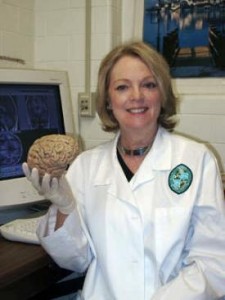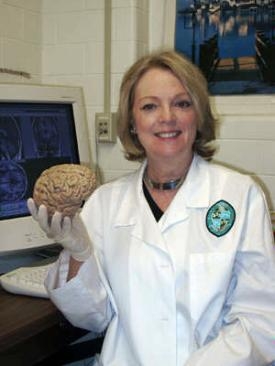By Sarah Allen/reporter

Researchers discovered that attitude predicts the highest achievement, an educational neuroscientist told NE students April 24.
Janet Zadina, featured speaker for the Van Parker Research Symposium, discussed learning techniques and brain activity.
The difference between thinking and real learning is that learning is the formation of new synapses and dendrite branching, Zadina said.
“Practice makes perfect,” she said.
An example would be when people first learn how to drive. As learning takes place, new dendrites grow. After years of driving, it becomes long-term potentiation (or increased effect), Zadina said.
“The single most important factor in learning is the existing neural network in your brain,” she said.
Time and frequency are most important when making connections because it has to be important information to the individual for that person to learn it, Zadina said. People can develop their neural foundation networks different ways: watching a movie or YouTube video for background, providing information with material grade levels below one’s current level, assigning textbook reading or using lots of visuals.
“The one learning style that applies to all learners is visual pathway,” she said. “We see with our brain” instead of the eyes.
The more visual people are, the more likely the information will be remembered, Zadina said. Research shows that with visual learning, 65 percent is retained 72 hours later whereas only 10 percent is retained from text and oral approaches during that same time frame. She said a good study strategy would be to incorporate images in lessons, whether visual or mental.
The best study strategy is to practice testing, Zadina said. And the worst study strategy is underlining and highlighting information. Those who multitask the most are actually the worst at it, she said. People may be worse at focusing, which makes them multitask. More effort is required when people are learning a new task.
“Experience causes the physical structure of the brain to change,” she said.
The frontal lobes in healthy brains mediate higher-order thinking and working memory. Emotion and attention drive learning, and Zadina said the frontal lobes are still under construction until people are 18-25 years old.
She said people should have a “growth mindset” instead of a “fixed mindset.” Growth mindsets have the ability to work hard, learn and attain more information than a fixed mindset would.
“Adults must not become discouraged in learning,” she said. “Although it may take a little longer, however, they learn much more deeply. They do not need to be intimidated and to keep in mind that the brain is always plastic [it can stretch and change].”
Michael Wilson also contributed to this story



























